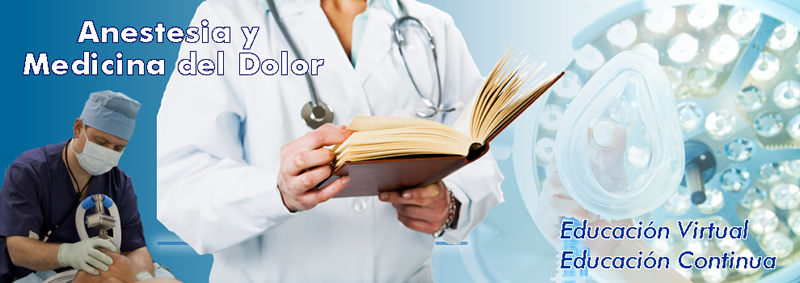Lesión medular traumática: una revisión del estado actual del arte y futuras direcciones: ¿qué sabemos y hacia dónde nos dirigimos?
NASSJ
Traumatic spinal cord injury: a review of the current state of art and future directions – what do we know and where are we going? – North American Spine Society Journal (NASSJ)
@NASSJournal
Yi Lu, Joshua I. Chalif y Benjamin R. Johnston debaten sobre las futuras direcciones en el tratamiento de la LME con Tobias Mattei, editor adjunto de NASSJ:
https://youtube.com/watch?v=FlODI2O_wGs&list=PLdJXwbbidigFkMvTvyAtNPOeSUQ4jcAsD
https://nassopenaccess.org/article/S2666-5484(25)00021-6/fulltext
@NASSspine
@ElsOrthopaedics #orthotwitter #orthopedics #spine #MedTwitter
Introducción
La epidemia de opioides en Estados Unidos representa una crisis de
salud pública con más de 107,000 muertes por sobredosis en 2022. Entre
los factores de riesgo, los pacientes con patologías de columna suelen
tener altas tasas de prescripción y consumo prolongado de opioides. Este
uso sostenido se relaciona con peores resultados postoperatorios,
complicaciones y riesgo de desarrollar un trastorno por uso de opioides
(OUD).
El dolor es un fenómeno biopsicosocial y los procesos de evaluación cognitiva
(cognitive-appraisal) podrían influir en cómo los pacientes perciben su
dolor y en su riesgo de OUD. Hasta ahora, esta relación no había sido
explorada. El objetivo del estudio fue evaluar si los procesos de
evaluación cognitiva moderan la relación entre el riesgo de OUD y el
dolor reportado tras cirugía de columna.
Métodos
Se diseñó un estudio longitudinal de cohorte con 342 adultos sometidos a cirugía por patologías lumbares, cervicales o deformidad espinal en un hospital universitario (Johns Hopkins, 2021–2023).
- Instrumentos:
- Dolor: Numeric Rating Scale (NRS).
- Discapacidad: Oswestry Disability Index (ODI) y Neck Disability Index (NDI).
- Salud global: PROMIS-29.
- Procesos cognitivos: Quality of Life Appraisal Profile v2 – Short Form (QOLAP).
- Creencias y autoeficacia: Pain Self-Efficacy Scale y Barriers Questionnaire-Taiwan.
- Clasificación del riesgo de OUD: basada en autoinforme de uso de opioides pre y postoperatorio (30 días antes y a los 3 meses), validada con revisión de historias clínicas (mención de dependencia, prescripción activa, suspensión reciente). Se definieron cuatro grupos: riesgo bajo, bajo-moderado, alto-moderado y alto.
- Análisis: Modelos de regresión múltiple para predecir dolor a 3 meses según procesos cognitivos preoperatorios, postoperatorios y cambios. Se evaluaron interacciones entre grupo de riesgo y procesos de evaluación cognitiva, ajustando por covariables demográficas y clínicas. Se aplicó corrección de Benjamini-Hochberg para reducir error tipo I.
Resultados
- Validación de la clasificación OUD: Los pacientes de alto riesgo tuvieron 4.88 veces más probabilidades de tener mención de dependencia en la historia clínica (p = 0.013).
- Características de la muestra: Edad media 61 años, 54% mujeres, 88% raza blanca; la mayoría con patología lumbar (70%).
- Diferencias clínicas y sociales: Los pacientes de alto riesgo eran más jóvenes, con menor educación, ingresos y empleo, y peor salud física y mental.
- Diferencias en appraisal:
- Los pacientes de alto riesgo prequirúrgico tendieron a enfocarse en metas de resolución de problemas y en problemas recientes de salud, y menos en habituación o comparación con otros.
- A los 3 meses, el grupo de bajo riesgo mostró menor compromiso con metas de resolución y menor énfasis en aspectos negativos recientes.
- Moderación por appraisal:
- El endorso prequirúrgico de metas de resolución de problemas se asoció con menos dolor a 3 meses en el grupo de alto riesgo, pero con más dolor en el grupo de bajo riesgo.
- Interacciones significativas también se hallaron con las comparaciones con otros específicos y el énfasis en aspectos recientes/negativos.
- Ni los appraisal a 3 meses ni los cambios en appraisal moderaron la relación entre OUD y dolor.
- Efectos principales: Independientemente del riesgo, appraisal positivo y habituación se asociaron con menos dolor, mientras que focalizarse en problemas recientes y negativos se relacionó con más dolor.
Discusión
Este es el primer estudio en demostrar que los
procesos de evaluación cognitiva prequirúrgicos moderan la relación
entre riesgo de OUD y dolor postoperatorio. Los pacientes con alto
riesgo que enfatizan metas de resolución de problemas experimentan menos
dolor, mientras que en los de bajo riesgo ocurre lo contrario. Esto
sugiere que las intervenciones cognitivas y de mindfulness podrían
adaptarse según el perfil de riesgo.
Las diferencias observadas
también se alinean con determinantes sociales de salud (educación,
empleo, ingresos). Los hallazgos respaldan el uso de clasificación de
riesgo basada en autoinforme validado clínicamente como herramienta de
tamizaje.
Conclusiones
Los procesos de evaluación cognitiva prequirúrgicos influyen de manera diferencial en el dolor postoperatorio según el riesgo de OUD. Esto abre la puerta a intervenciones individualizadas basadas en appraisal y mindfulness, especialmente en pacientes de alto riesgo. Se requieren estudios prospectivos más grandes para confirmar la causalidad y refinar las estrategias de intervención.
Palabras clave
- Dolor
- Cirugía de columna
- Trastorno por uso de opioides (OUD)
- Autoeficacia
- Procesos de evaluación cognitiva (cognitive appraisal)
- Calidad de vida
- Riesgo
Mensah EO, Chalif JI, Johnston BR, Chalif E, Parker T, Izzy S, He Z, Saigal R, Fehlings MG, Lu Y. Traumatic spinal cord injury: a review of the current state of art and future directions – what do we know and where are we going? N Am Spine Soc J. 2025 Mar 5;22:100601. doi: 10.1016/j.xnsj.2025.100601. PMID: 40256049; PMCID: PMC12008600.
This is an open access article under the CC BY-NC-ND license (http://creativecommons.org/licenses/by-nc-nd/4.0/).






